Day 7: Tres Cool Triers Tour!
Main Page > 2023 Roman da North in Planes, Trains, and Automobiles ! >
A 6:00 AM Plane flight means that the Boys had rise at the ungodly hour of 4:30!
An Too Darned Early Flight!
Today's tour involved a ridiculously tight schedule of flying a puddle jumping prop plane to Munich, then catch a puddle jumping prop plane Luxembourg, to rent a car in order to drive to the German Town of Triers, then two hours north to Aachen, then back in order to catch a 6:00 AM to London! One mess up and the plan was crap! So red-eyed the Boys booked out of the weird AirBnB, got a Uber quickly (they were worried!) and got to the airport and on the plane without any drama. After a quick layover in Muenchen, (where Bone had a hot dog!) the Boys were off to the tiny burg of Luxembourg!
Trail to Trier through Luxembourg!
Checking out Trier makes all sorts of sense if one is checking out the northern boundary of the Roman Empire. At one time, Trier was one of the four capitals of the Empire during Diocletian's Tetrarchy that was instituted in 293 AD. But why Luxembourg? It is because Triers is in the very cool little nexus location, where Luxembourg, Belgium, and Germany all meet. It is the closest airport to Triers. So the Boys landed in Luxembourg, had a very lovely time with a great person who helped Mike and Bone get a car and gave great directions to Triers which was only a simple 20 minutes away. So in the car, the Boys were on their way to Triers!
Tremendous Trier!
Once in Triers, Mike and Bone was taken by the different architecture from Vienna. Triers was a clearly proper German town in look and feel. Also the weather was not hot and steamy like Split, it was a beautiful, warm, crisp fall day! Triers was founded by the Romans in the late 1st century BC as Augusta Treverorum ("The City of Augustus among the Treveri", a local German tribe that the Romans subjugated), Trier is considered Germany's oldest city. Trier was important since it oversaw the Roman border of the Rhine River and help manage the troublesome local tribes. Today, Triers has a number of Roman ruins starting with the very iconic Porta Nigra! Parking had to check out this amazing structure!
The Porta Nigra!!
In any website or book when Triers comes up, the first picture you will see is the Porta Nigra. The Porta Nigra, Latin for black gate, is a large Roman city gate into Trier, and is now a UNESCO World Heritage Site. The name Porta Nigra originated in the Middle Ages due to the darkened color of its stone; the original Roman name has not been preserved.
The Porta Nigra was built in grey sandstone after 170 AD. The original gate consisted of two four-storied towers, projecting as near semicircles on the outer side. A narrow courtyard separated the two gate openings on either side. For unknown reasons, however, the construction of the gate remained unfinished. For example, the stones at the northern (outer) side of the gate were never abraded, and the protruding stones would have made it impossible to install movable gates. Nonetheless, the gate was used as a town entrance for centuries until the end of the Roman era in Trier.
In Roman times, the Porta Nigra was just one of the four city gates, one of which stood at each side of the roughly rectangular Roman city. It guarded the northern entry to the Roman city, while the Porta Alba (White Gate) was built in the east, the Porta Media (Middle Gate) in the south, and the Porta Inclyta (Famous Gate) in the west, next to the Roman bridge across the Moselle. The gates stood at the ends of the two main streets of the Roman Trier, one of which led north-south and the other east-west. Of these gates, only the Porta Nigra still exists.
It is still an imposing structure, and to this day is one of the tallest structures in Triers. After a few pictures, Mike and Bone headed into the heart of Triers!
Iconic Downtown Triers
As mentioned earlier, Triers has the very cool Medieval downtown look so many northern European burgs have. Ornate building and statues in large public squares provided the Boys with an idyllic morning meander! Their first objective was where Constantine would lay his royal rear! His throne room in town, the Basilica of Constantine!
A Throne for an Emperor! Constantine's Place

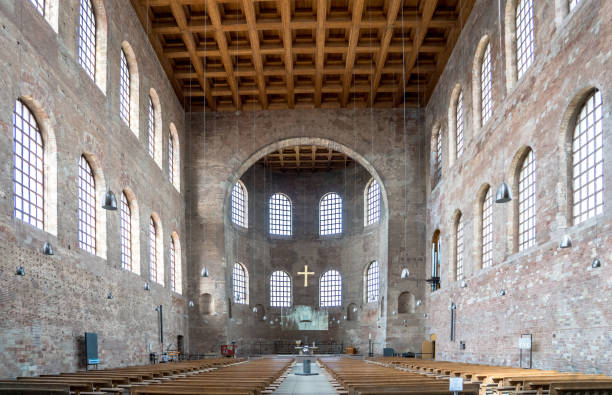
The Basilica of Constantine was originally built as the Roman palace for Constantine during his 6 years living in Triers, when it became the second most important city in the Empire. After Constantine left to build Constantinople, it became a Christian Church which is its current use to this day.
The basilica contains the largest extant hall from antiquity (see List of ancient Greek and Roman roofs. Because of its imperial importance in Trier during the Roman Empire and its architecture, it was designated as a UNESCO World Heritage Site in 1986! However, being an active Church, other than the building, there is not much to really see, so Mike and Bone headed on to the Roman Museum, right next door.
Bone, In through the Out Door in the Roman Museum of Triers
"Damned thing must not be open today !" Cried the Bone trying to open the door of the Roman Museum of Triers. Pull as he might, it wouldn't open with Mike waiting patiently, until a kind German couple with flawless English told the stupid Bone, "trying pushing!" Embarrassed and agitated Bone and Mike went in to check out the artifacts of a bygone era of Triers.
The Many Exhibits from Roman Triers
Roman Museum of Trier is one of the most important Roman archaeological museums in Europe, documenting 200,000 years of the history and cultural development of the region from ancient times through to the end of the 18th century. The museum has 4,500 items, including the largest collection of mosaics north of the Alps, the gigantic grave monuments from Neumagen, reconstructions of everyday scenes and the largest collection of Roman gold coins in the world, made up of more than 2,600 gold coins.
The exhibition provided Mike and Bone a circular tour through the entire history of Trier and the region around it, from the Ice Age to the Roman times.
Exhibits include the oldest man-made stone tools from the region, archaeological evidence of early villages and settlements, hoards of jewelery and weapons, and magnificent Celtic tombs.
However, the majority of the museum is dedicated to the Roman era, from the proof that Trier can call itself the oldest city in Germany through the famous grave monuments from Neumagen, including the Roman wine ship and the ‘Schulrelief’ carving, to the amazing mosaics that make up the largest collection to the north of the Alps. It all bears witness to the glory of the ancient city that once found fame as an imperial residence. After an hour of checking out the amazing Roman artifacts Mike and Bone went to check out their final Roman site in Triers, the Triers Imperial Baths!
Showering Affection on the Roman Imperial Baths!
Next, Mike and Bone were hot for a bath, the Triers Baths that is! The Trier Imperial Baths are a large Roman bath complex constructed in the early 4th century AD, during the reign of Constantine I. During that time, Trier was the primary residence for Constantine's son Crispus.
Constantine’s dad, Constantius Chlorus initiated construction of the baths shortly before 300 C.E. and construction ceased around 316 C.E. with the baths still incomplete. Like Imperial baths found in Rome, such as the Baths of Caracalla or the Baths of Trajan, the Trier Imperial Baths were divided into two parts, the thermae and the palaestra.
Mike and Bone took pictures from above of the complex network of underground passageways used by the staff which can still be seen today, along with the remains of the sewer system. Ironically the baths were never completed and were made into a castle in the Middle Ages. After walking the grounds in the heat of the day made the Boys realize they hadn't eaten anything yet, so time for lunch!
Lord of the Flies!
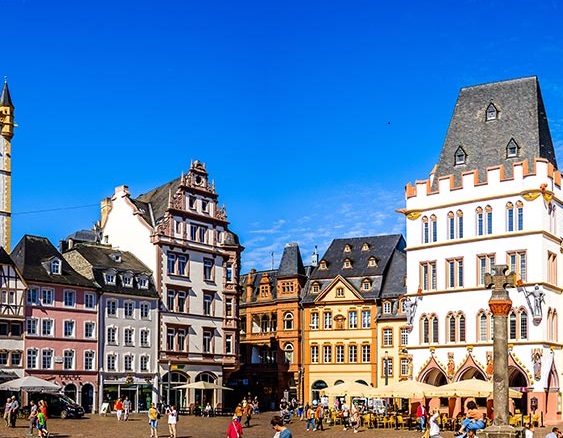
Most North American high School students get the unparalleled opportunity to read William Golding's 1954 novel "Lord of the Flies" which tells the story of a group of young boys who find themselves alone on a deserted island. They develop rules and a system of organization, but without any adults to serve as a civilizing impulse, the children eventually become violent and brutal. It is a horrifying book to read. But nearly as horrifying as the lunch Mike and Bone had at an Italian Restaurant in the Trier Town Square! The Boys erroneously chose to sit outside in the warm afternoon sun. As they ordered their pasta Bolognese and pizza, there was the largest swarm of flies the Boys had ever seen was hovering over the patrons sitting outside. In particular a German Mother and her kids had a pizza, completely covered with flies! Worst yet, their were eating it!! Quite frankly, watching this family crunch down on the flies on their pizza, left the Boys, a little nauseous and covering their food from the same pernicious flies!
so while Mike and Bone are lord of the pies, the German Family were lord of the flies!
After lunch it was pushing 2:00PM Mike and Bone had a choice, head back to Luxembourg, or try to see the Aachen Cathedral, home to Charlemagne ( and his bones!). The Boys said "Damn the torpedoes!" Jump into their Rental and boogied the two and half hours up to Aachen!
Barreling through Belgium!
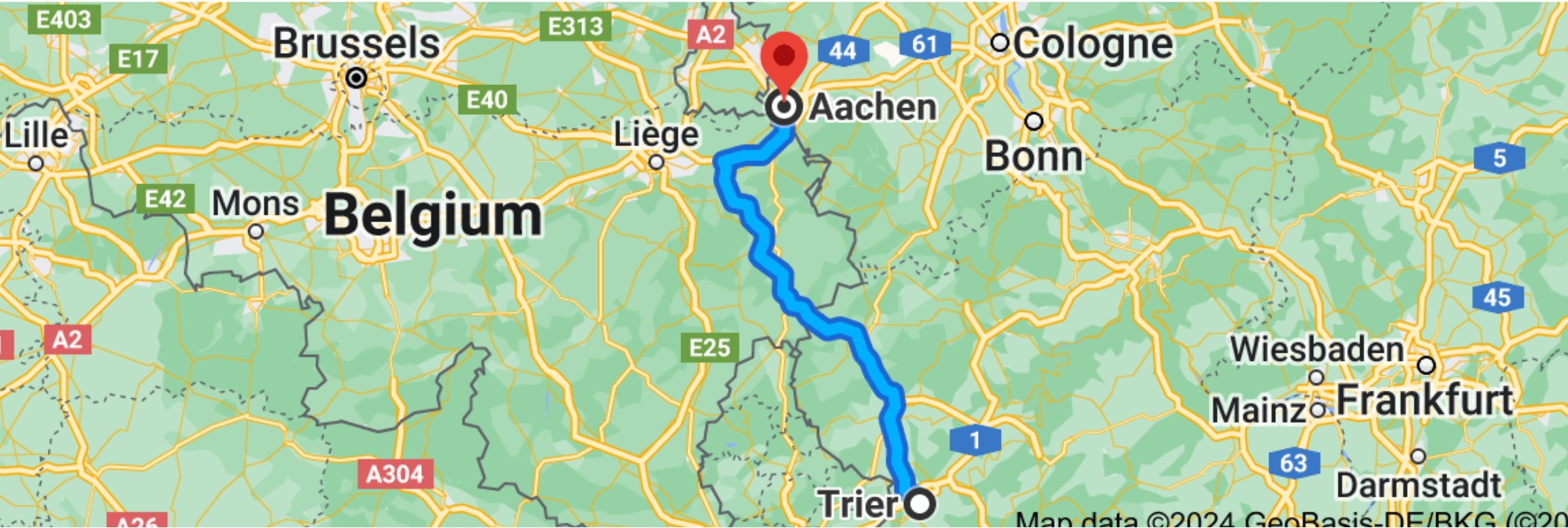
As mentioned earlier, the Boys were in that interesting area where Luxembourg, Belgium and Germany met! In order for the Boys go from one German city to another German city took their right through Belgium!
Aachen: Charlie the Great's Town!
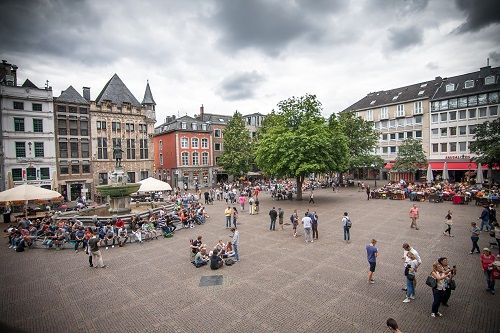
So this is was supposed to be a tour on Rome, so what does Charlemagne, a Frankish King gotta to do with Rome, well nothing really! OR... Sorta,,,, maybe it does?!? Whatta about the Holy Roman Emperor? Wasn't Charlie the first Holy Roman Emperor????
Plus, wasn't Aachen a Roman Town (btw, yes it was!)??
So, yeah, Aachen is a part of the Roman Story! So, what is the story of Aachen that dragged the Boys two hours north of Triers? Well it is mostly about this medieval dude that lived 400 years after the fall of the Western part Roman Empire (not the whole empire!, just the West!) named Charlie, that was a fearsome warrior, a pliable politician, and a puppet to the Pope!
Charlemagne, French (Charles-le-magne) for "Charles the Great." Was born in the Aachen region. Aachen has warm thermal springs which has attracted people back to the Bronze age, the first settlement in fact was from the Celts who were replaced by the Romans. However, the Romans didn’t stick around. After the withdrawal of the Roman troops, the area was Germanized by the Franks around the 5th century. It was with the Franks that Aachen achieved its place in history. Charlemagne was the first-born son of Pepin the Short in the Aachen areas. Pepin took control of a country called Austriasa, which is essential the east part of modern Germany and the west part of France. When Charlemagne took charge, he made Aachen as his base and went on to conquest much of modern France, Central Europe, and the northern half of the Italian Peninsulas always the done to Rome. He swept away many of the tribes that collapsed the Western Roman land, tribes like the Lombards were subjugated by the sword of Charlemagne.
The World Famous Aachen Cathedral!

Now, for the plot twist. The Pope in Rome had a problem. Before Charlemagne, the Pope still had an ancient relationship with the Roman Emperor in Constantinople. You see when Constantine the Great adopted Christianity as the official religion of the Roman Empire, made sure that everyone knew that it was THE emperor that was in charge of the church, and the highest church leaders, the bishop of Rome, the bishop of Antioch, the bishop of Jerusalem, and the bishop of Constantinople all reported to the emperor. All were equals. At the time that Constantine set all this up in 325 AD the city of Roman was still in the Roman Empire. NOW strangely enough by 800 AD the city of Rome was not in the Roman Empire (how strange is that!) Since the Empire lost the city of Rome, first to the Visigoths, then to the Lombards, then to the Normans, the Bishop of Rome became known as the Pope started to redefine Christian doctrine away from what the Emperor and his Bishop of Constantinople (which had become known as the “Patriarch”) had established as Christian “Orthodoxy.” Until 800 AD, The Emperor appointed the leadership. But since the Empire didn’t control the City of Rome, the Pope saw in Charlemagne a chance to re-define that relationship to where the pope appoints the emperor! The Pope, being the devious little so and so he was, used the “Donation of Constantine,” which was a forged Roman imperial decree by which the 4th-century emperor Constantine the Great supposedly transferred authority over Rome and the western part of the Roman Empire to the Pope. Composed for the purpose of give the Pope the authority to crown Charlemagne “Holy Roman Emperor!” in Rome! This is why all the way to the early 20th century in Catholic countries, the Pope was known as the Kingmaker! As Paul Harvey used ta say "Now you know the rest of the story of why Mike and Bone checked out Aachen!! Now there is really only one place (but an awesome place!) to check out what Charlemagne did in Aachen. Once crowned “Emperor” Charlemagne really did not want to recreate Rome in Rome. He simply wanted the role, took a bunch of artifacts, and made his headquarters in Aachen.
There, he built a palace and an amazing cathedral. In fact one of the first massive cathedrals in medieval Europe! Aachen Cathedral is one of the oldest in Europe, built by Charlemagne, who was buried there in 814. From 936 to 1531, the Palatine Chapel saw the coronation of thirty-one German kings and twelve queens. It was interesting to think that in 896 when it was started, most local people had devolved from the Roman times into one room, dirt floor wooden huts, and here is this amazing stone and marble structure built 300 years before Notre Dame in Paris!
In 1978, Aachen Cathedral was one of the first 12 items to be listed on the UNESCO list of World Heritage sites, because of its exceptional artistry, architecture, and central importance in the history of the Holy Roman Empire.
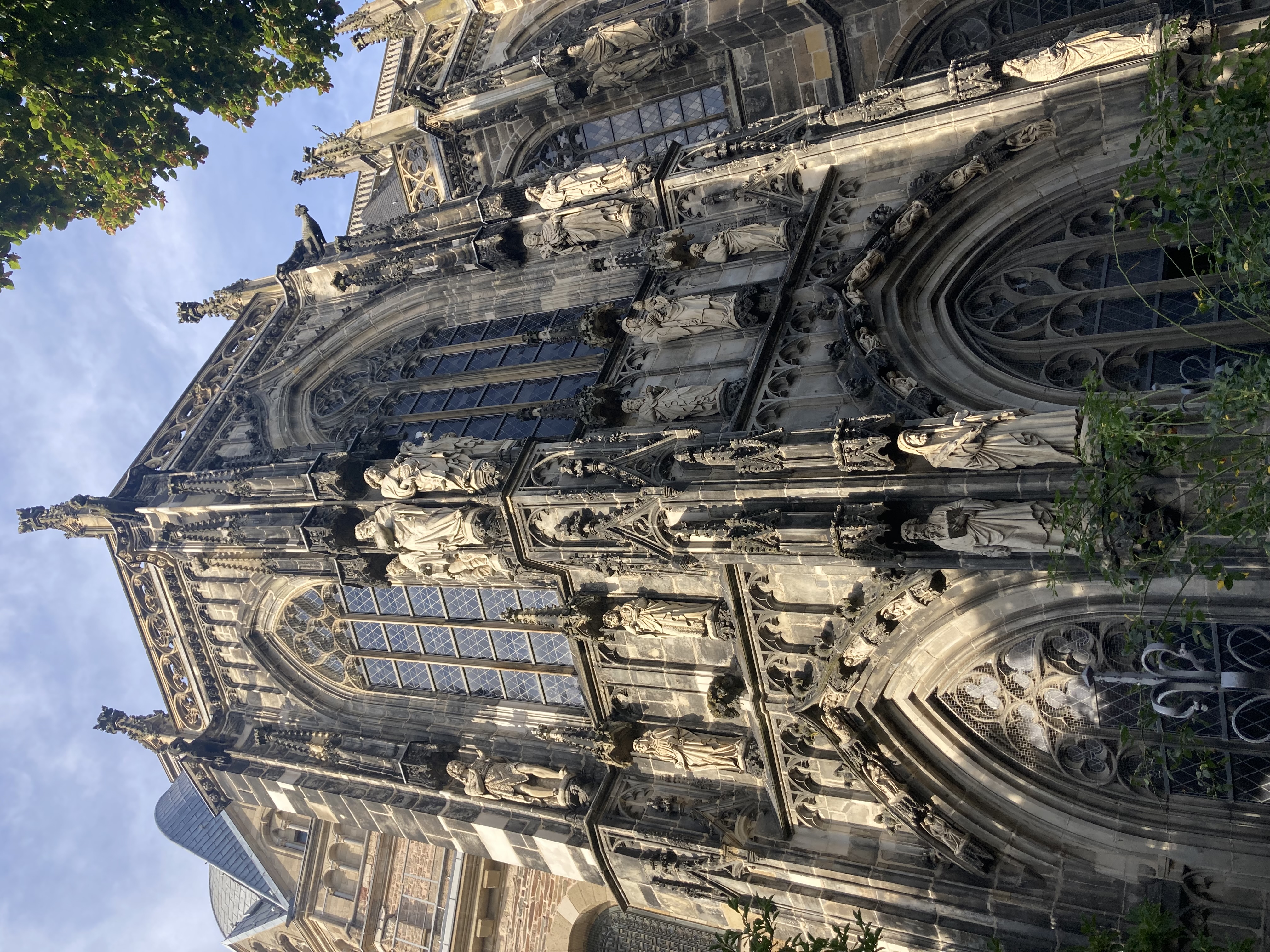
There, he built a palace and an amazing cathedral. In fact one of the first massive cathedrals in medieval Europe! Aachen Cathedral is one of the oldest in Europe, built by Charlemagne, who was buried there in 814. From 936 to 1531, the Palatine Chapel saw the coronation of thirty-one German kings and twelve queens. It was interesting to think that in 896 when it was started, most local people had devolved from the Roman times into one room, dirt floor wooden huts, and here is this amazing stone and marble structure built 300 years before Notre Dame in Paris!

In 1978, Aachen Cathedral was one of the first 12 items to be listed on the UNESCO list of World Heritage sites, because of its exceptional artistry, architecture, and central importance in the history of the Holy Roman Empire.
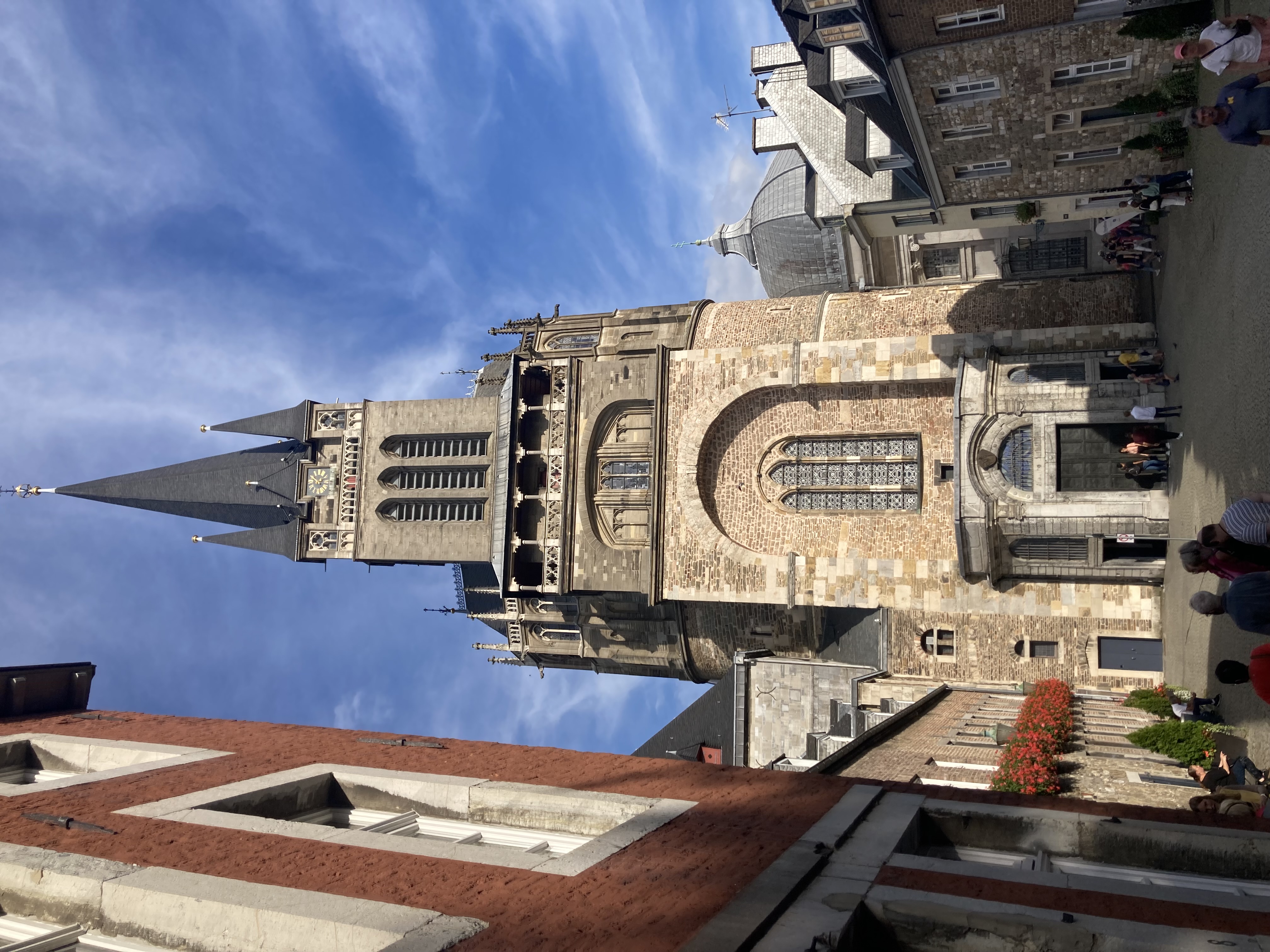
Charlemagne was a Conehead!
To legitimize his ascendance to Emperor, Charlemagne wanted a "linkage" to his reign back to the ancient Roman Emperors (but not to the actual Roman Emperor who was in Constantinople!), so he brought a group of bronze statues from the Forum in Rome to Aachen. These are prominently (and proudly!) displayed in the entrance to the Cathedral.
Mike and Bone hanging with Charlie the Great in his House!!


No Bones About! The Reliquary of Charlemagne!

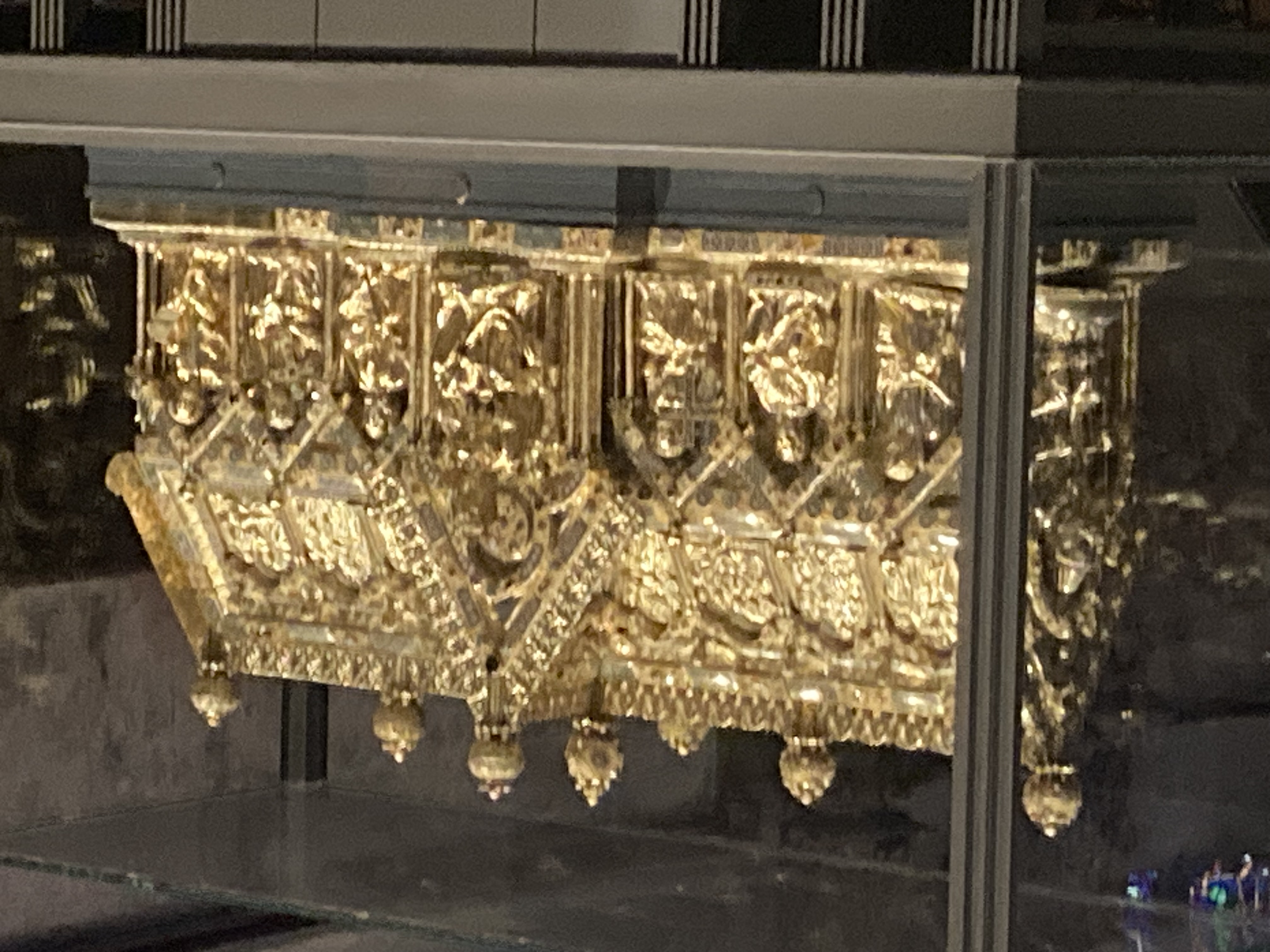
Charlemagne so loved Aachen that he never left, literally! When Charlemagne became ill with pleurisy in the autumn of 813 and became completely bedridden for seven days before dying on the morning of 28 January 814. Charlemagne's body was prepared and buried in the chapel at Aachen by his daughters and palace officials the same day. For some reason, Charlemagne's remains were exhumed by Holy Roman Emperor Frederick Barbarossa in 1165 and reinterred in a new casket by Frederick II in 1215. After paying their respects, and connecting the dots from the Romans to the Holy Romans, Mike and Bone checked the clock, it was pushing 6:00, they had a two and half hour drive back to Luxembourg, had to get dinner, and get ready for another 6:00 AM flight to London!
The 1914 Road of the German Army to Liege Belgium!